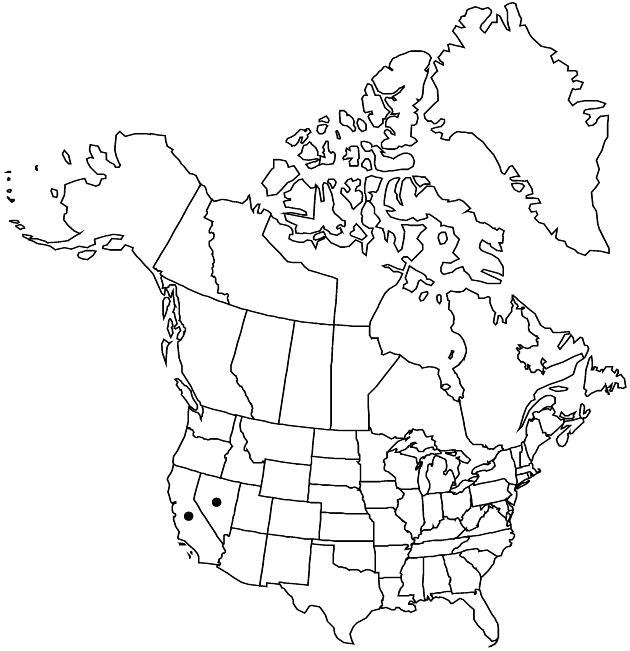Hazardia brickellioides
Madroño 26: 125. 1979.
Common names: Brickellbush bristleweed
Basionym: Haplopappus brickellioides S. F. Blake
Revision as of 15:16, 18 September 2019 by FNA>Volume Importer
Shrubs, 20–80 cm. Stems scabrous to hispid, some hairs yellow gland-tipped. Leaves subsessile or subpetiolate; blades elliptic to obovate or obovate-cuneate, 10–35 × 5–25 mm, coriaceous, bases not clasping, margins usually coarsely spinulose-dentate (with 1–4 pairs of teeth), rarely entire, apices acute, faces pilose to scabrous, some hairs yellow gland-tipped. Heads borne singly or 2–3 in cymiform arrays. Involucres cylindric to turbinate, 6–7 × 4–5 mm. Phyllaries recurved (or inner erect), lanceolate, apices acute, faces hispidulous, glandular. Ray florets 5–8, fertile; corollas shorter than involucres, inconspicuous. Disc florets 8–12; corollas 6–8 mm. Cypselae 2–3 mm, sparsely sericeous. 2n = 12.
Phenology: Flowering Jun–Oct.
Habitat: Limestone outcrops and cliffs
Elevation: 700–2100 m
Discussion
Selected References
None.
Lower Taxa
None.
